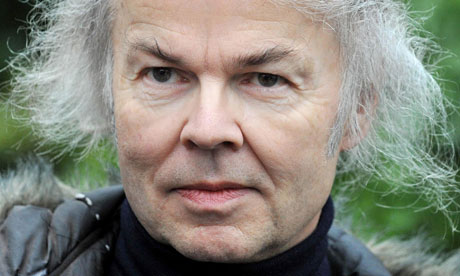Chris Jefferies and suspects under the spotlight
Jefferies has been marked out as an oddball – but many of us might look strange when subjected to a neighbour's scrutiny

Chris Jefferies, the retired private-school English teacher who has been arrested in connection with the killing of Joanna Yeates, is, according to a neighbour, a "man who keeps himself to himself".
Neighbours – and today's front pages – have made various other insinuations about his character and appearance. One neighbour has noted that "his hair was all over the place" and he "dyed it blue". He also "idolised a poet obsessed with death" (Christina Rossetti). Most reports have also focused on the fact that he was an "active Liberal Democrat" while a former pupil recalls that "he had dirty fingernails".
In 1994, when I was the Guardian's crime correspondent, I went to Rickmansworth in Hertfordshire to cover a murder. The victim was a local man so we were knocking on the doors of neighbours to find out more about him. I found myself on the doorstep of a house with another reporter. "I bet whoever answers the door will say 'he kept himself to himself'."
The neighbour duly obliged by saying exactly that, prompting my companion to burst into inappropriate laughter. (The man convicted of this murder, Kevin Lane, is still protesting his innocence and details of his case can be found on the Guardian's Justice on Trial website.)
But the fact is that, for most people in Britain, a murder victim or suspect who lives nearby will be someone who "kept themselves to themselves". Or they will be – the classic description of someone who does not fit into a neat category – a loner or a "recluse."
Murders are still comparatively rare in Britain. When one involves a young white woman and comes in that news-free Christmas/New Year limbo period it will inevitably find the spotlight that might elude it at busier times – in contrast, for example, to the case of Serena Beakhurst, who went missing more than two weeks ago in Tulse Hill.
What has given this one additional coverage has been the arrest of a visible suspect with a hinterland of his own.
We will know in the fullness of time who murdered Joanna Yeates. At the time of writing, no one has been charged.
The detectives in the case are very well aware of the dangers of focusing an entire investigation on one "oddball" suspect. Colin Stagg, a classic "loner", was wrongly accused of the murder of Rachel Nickell on Wimbledon Common in 1992, not least because he seemed like such a likely customer.
It was years before Stagg was vindicated. Barry George, cleared of the 1999 murder of Jill Dando in west London, was another erratic character who seemed to fit the bill.
The police investigating the 1991 murder of the Oxford student Rachel McLean had a strong hunch that the killer was her boyfriend, John Tanner, another student. He had told the police that he had seen Rachel with another man at Oxford station and he duly appeared at a press conference appealing for her to get in touch when he knew she was already dead.
On that occasion, the police were swiftly proved right and Tanner was convicted and jailed.

